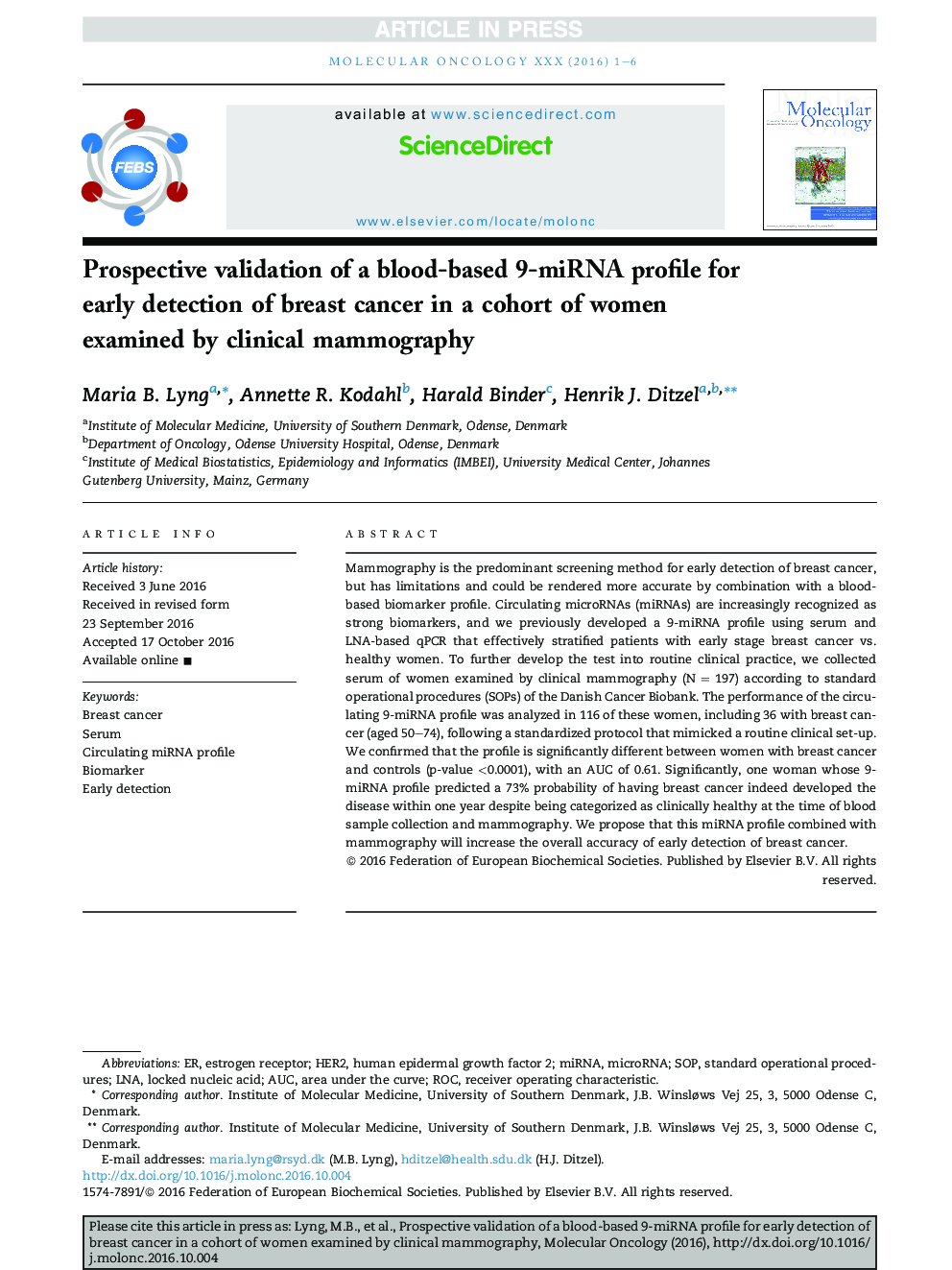| Article ID | Journal | Published Year | Pages | File Type |
|---|---|---|---|---|
| 8455608 | Molecular Oncology | 2016 | 6 Pages |
Abstract
Mammography is the predominant screening method for early detection of breast cancer, but has limitations and could be rendered more accurate by combination with a blood-based biomarker profile. Circulating microRNAs (miRNAs) are increasingly recognized as strong biomarkers, and we previously developed a 9-miRNA profile using serum and LNA-based qPCR that effectively stratified patients with early stage breast cancer vs. healthy women. To further develop the test into routine clinical practice, we collected serum of women examined by clinical mammography (NÂ =Â 197) according to standard operational procedures (SOPs) of the Danish Cancer Biobank. The performance of the circulating 9-miRNA profile was analyzed in 116 of these women, including 36 with breast cancer (aged 50-74), following a standardized protocol that mimicked a routine clinical set-up. We confirmed that the profile is significantly different between women with breast cancer and controls (p-value <0.0001), with an AUC of 0.61. Significantly, one woman whose 9-miRNA profile predicted a 73% probability of having breast cancer indeed developed the disease within one year despite being categorized as clinically healthy at the time of blood sample collection and mammography. We propose that this miRNA profile combined with mammography will increase the overall accuracy of early detection of breast cancer.
Keywords
Related Topics
Life Sciences
Biochemistry, Genetics and Molecular Biology
Cancer Research
Authors
Maria B. Lyng, Annette R. Kodahl, Harald Binder, Henrik J. Ditzel,
